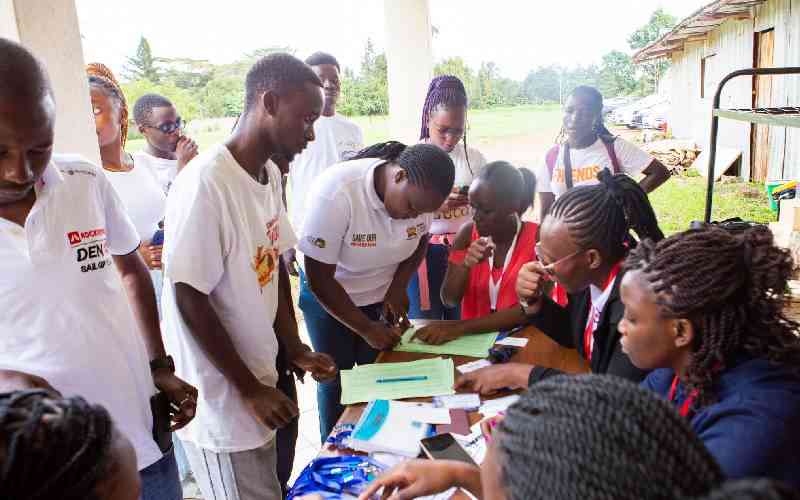By Tecla Wanjala
Who are the consumers of both forms of media, and are they, in effect, complicit in any coverage that will shift the nation away from its ugly past
The Truth, Justice and Reconciliation Commission has – finally - submitted its Final Report and recommendations to the President. The TJRC, whose mandate was to lead the inquiry into gross human rights violations and other historical injustices in Kenya between 12 December 1963 and 28 February 2008, finalised its report on May 2, 2013.
It is made up of 4 volumes documenting information gathered from statements, memoranda, individual and thematic hearings.
The report is divided into chapters based on key violations, including those relating to land, massacres, torture, economic crimes, economic marginalisation and ethnic tensions violence.
The TJRC report outlines findings and makes recommendations aimed at contributing towards lasting peace, national unity, dignity healing and reconciliation among the people of Kenya. The report further outlines an implementation mechanism as required by the TJRC Act that ensures execution of the Commission’s recommendations within stipulated time frames.
Following the Final Report’s submission to the President, an abridged version will be published in 3 national newspapers, a popular version distributed widely; the complete report is now available on its website (www.tjrckenya.org) and Facebook (“TJRC-Kenya’s Final Report”). Part of the privilege of having been part of this process at the highest levels is that I had a ring-side view of varied Kenyan stories, tragedies and promises.
A critical response to the product emerging out of our shared labour must – of necessity - be active civic engagement by the many interest groups that make up our polity.
Unbridled skeptism, in recent days watered by the “let us accept and move on” gospel, does little justice to the nation’s unfinished business, particularly for those among us whose dignity has been defiled.
In this initial write-up, allow me to limit my attention to women, youths and the Church as elements of organised civil society that ought to define the post-submission agenda of the TJRC. Fewer instances will remain as etched in my mind as those when I witnessed and heard tales of women who had borne the brunt of historical injustices in Mt Elgon and Wagalla, both areas for long regarded as the poster-children of the Kenyan State’s monopoly over violence.
The temptation often has been to cast experiences emerging from such areas as fillers in newspapers and weekend television on occasions when the news docket is dry for journalists and editors.
What the TJRC report has done, however, is to humanize these stories, thrust them firmly into public consciousness and create a space for further reflection, memory and action around the same.
Women across Kenya will do well to frame emerging conversations around the nation’s major interests, so that, in some decent ways, related horrors are never repeated and corrective action – retributive or restorative – initiated without delay.
Youths, on the other hand, can do much more than tweeting or Facebooking their merited cynicism about what goes for commissions of inquiry. Unlike their contemporaries in other parts of the world, they have the benefit of relatively broad exposure, and access to means of communication which – if well harnessed – ought to sustain debate and focus on what the TJRC report is all about.
In thinking about this, am often reminded of Kenyan youths in Kiryandogo, Uganda, displaced by the post-election violence of 2007/8; they don’t have the luxury of thinking about the next big thing on the Kenyan social scene, innovation hub, or economic venture, theirs remains a most uncertain future.
Stay informed. Subscribe to our newsletter
What should be the big debate in Kenya today, and is there a good reason why the TJRC report should not be the main focus in debates in the mainstream and new media in coming days? Who are the biggest consumers of both forms of media, and are they, in effect, complicit in any coverage that will shift the nation away from its ugly, troubled past? Kenyan youths ought to help answer these questions.
The Church, on the other hand, has an even more pressing task.
The writer is the TJRC Vice-Chairperson
 The Standard Group Plc is a
multi-media organization with investments in media platforms spanning newspaper
print operations, television, radio broadcasting, digital and online services. The
Standard Group is recognized as a leading multi-media house in Kenya with a key
influence in matters of national and international interest.
The Standard Group Plc is a
multi-media organization with investments in media platforms spanning newspaper
print operations, television, radio broadcasting, digital and online services. The
Standard Group is recognized as a leading multi-media house in Kenya with a key
influence in matters of national and international interest.
 The Standard Group Plc is a
multi-media organization with investments in media platforms spanning newspaper
print operations, television, radio broadcasting, digital and online services. The
Standard Group is recognized as a leading multi-media house in Kenya with a key
influence in matters of national and international interest.
The Standard Group Plc is a
multi-media organization with investments in media platforms spanning newspaper
print operations, television, radio broadcasting, digital and online services. The
Standard Group is recognized as a leading multi-media house in Kenya with a key
influence in matters of national and international interest.








